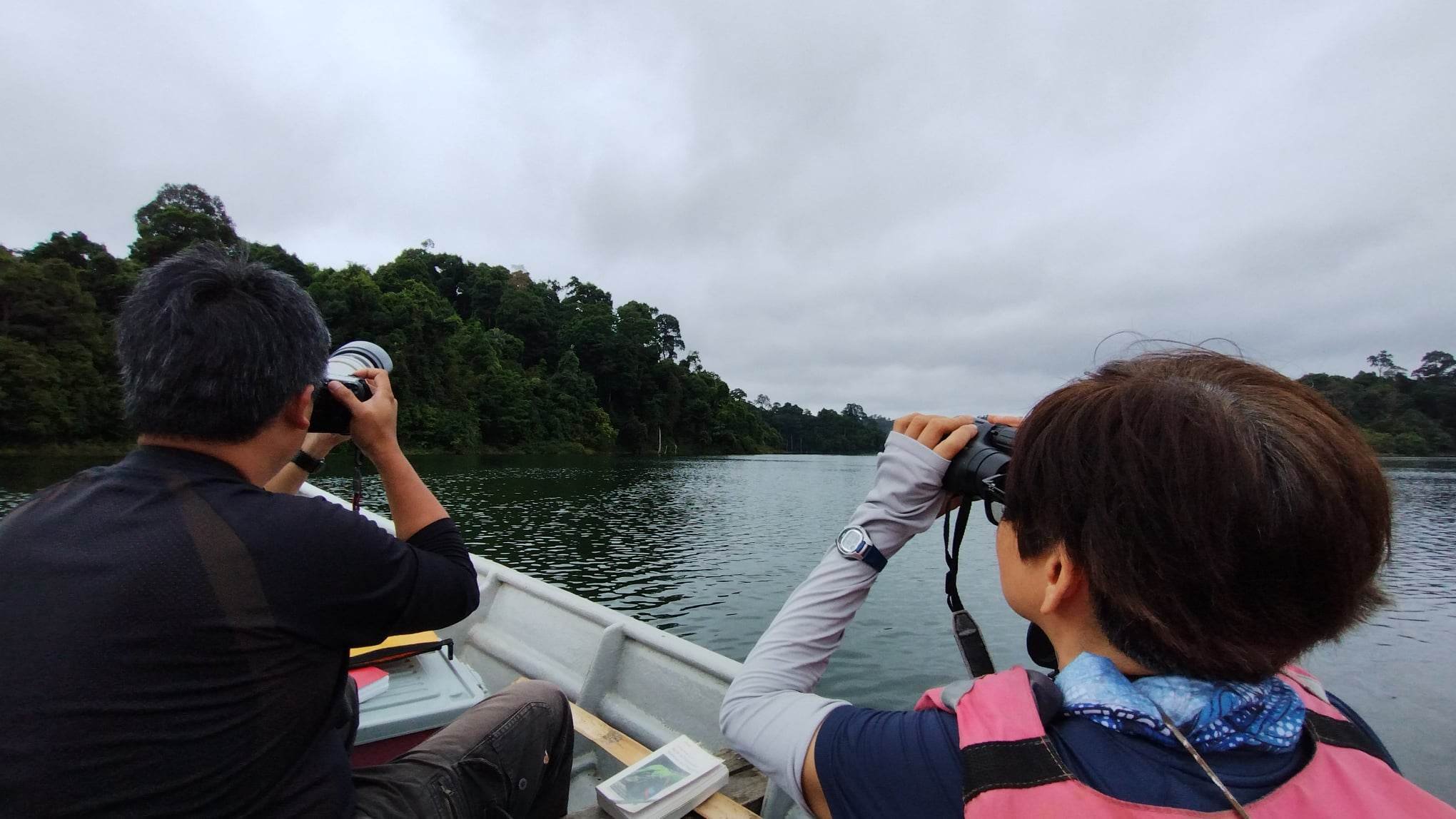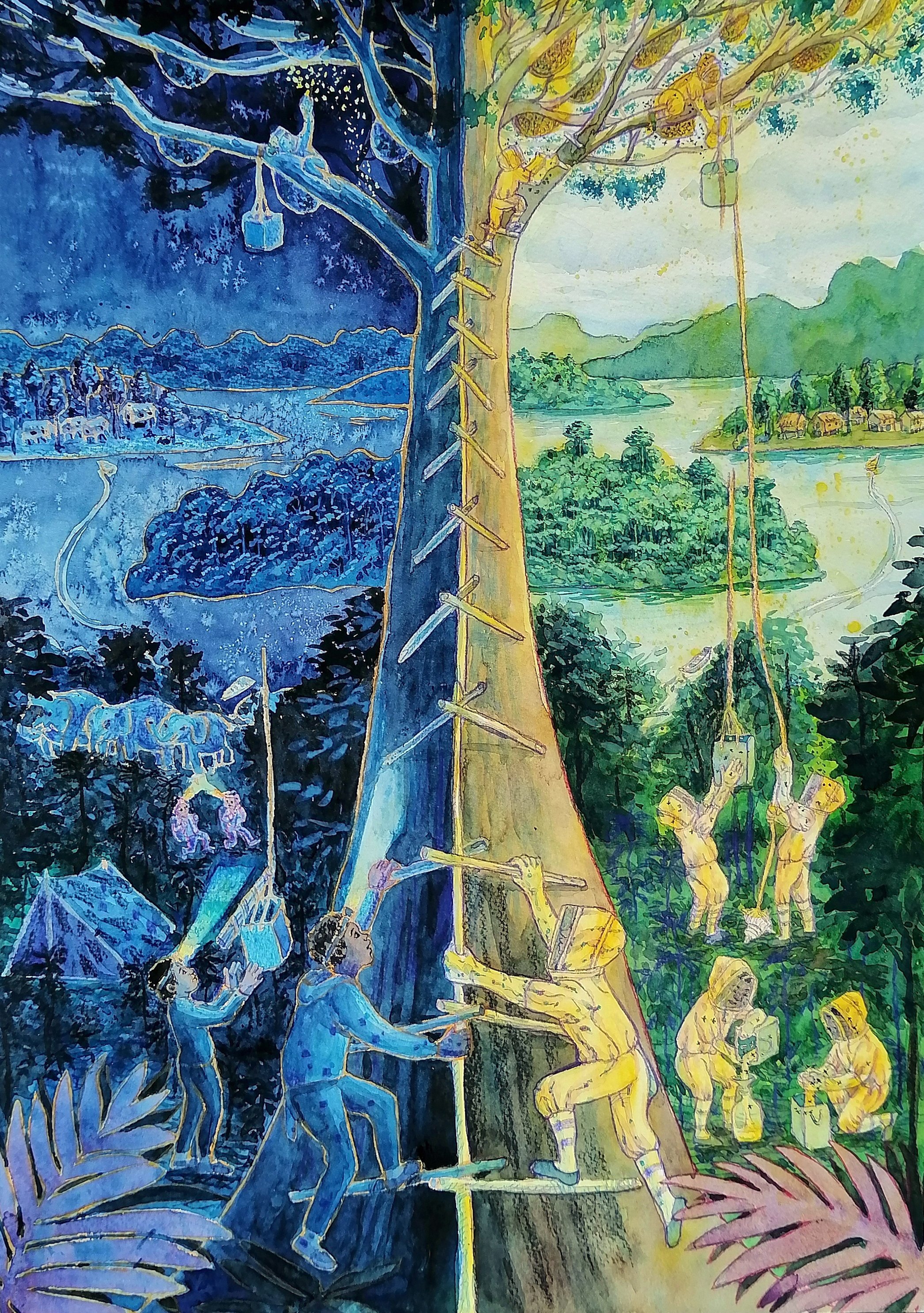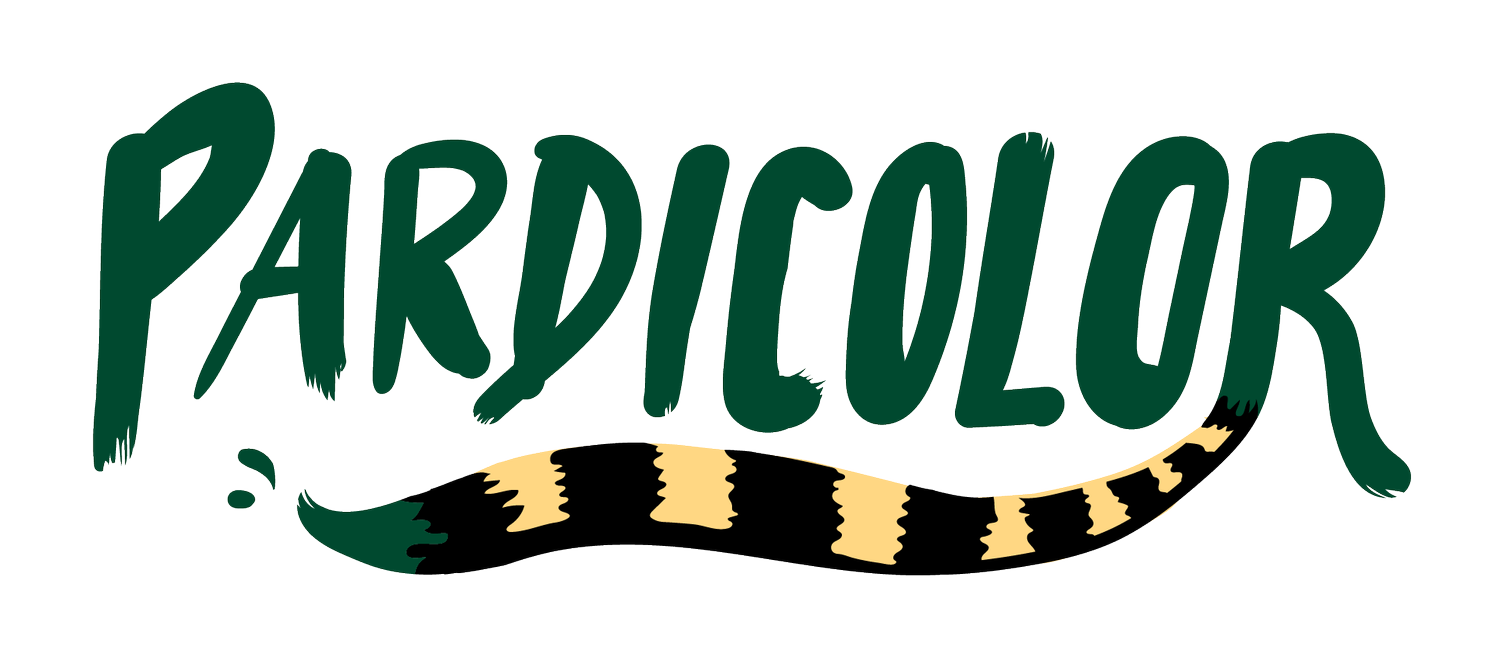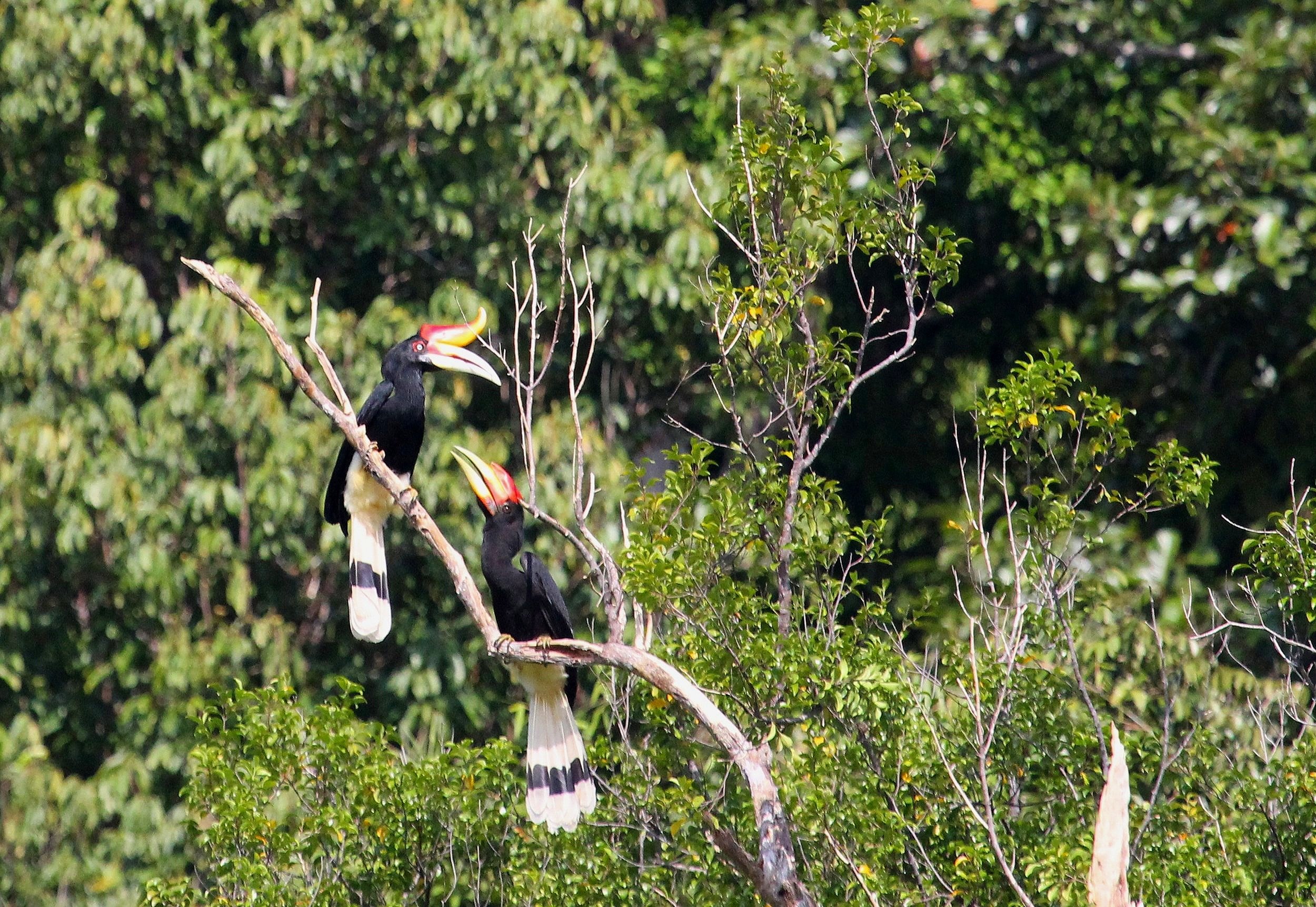
©Vincen/Nature Advisor
HORNBILL, HONEY IN THE FOREST
Leong Yoke Mee (Ammi)
MALAYSIA
Ammi is a two-time PCAF grantee; here we share individual illustrations from her latest picture book ‘Hornbill, Honey in the Forest’ which depicts the conservation work of Malaysia’s first full-time Orang Asli hornbill guardians and their traditional wild honey harvesting techniques in the Belum-Temenggor Forest Complex in Perak State, Peninsular Malaysia. Once again Ammi’s detailed field diaries allow us to follow in her footsteps as she joins the hornbill guardians in the forest and begins her sketches from the research boat. Ammi’s project shines a spotlight on indigenous knowledge and coexistence with nature and was produced in collaboration with Yeap Chin Aik, co-founder of ‘The Malaysian Nature Society (MNS) Hornbill Conservation Project’.
“Hornbills are one of the most amazing birds in our tropical forest. Malaysia is particularly blessed to have 10 hornbill species recorded in the country. Now, the situation is unfortunately not very lovely for many hornbill species in Asia due to habitat loss and poaching . The Malaysian Nature Society (MNS) started the MNS hornbill conservation project in 2004 in the Belum-Temenggor Forest Complex in Perak, to show that hornbills have a future in this country. Working alongside Orang Asli or indigenous people, government agencies, donors and even ordinary Malaysians, we have achieved and learned so much since then, but there is still so much to do to safeguard hornbills and forests. Hornbills need forest and forest needs hornbills.”
- Yeap Chin Aik, co-founder of the MNS Hornbill Conservation Project.
The first stop on Ammi’s 4-day field trip to research her project was the MNS field office in Gerik town, Perak. Here, Yeap Chin Aik shared information about the landscape of the Belum-Temenggor Forest Complex (BTFC) and daily work of the hornbill guardians. The BTFC is one of the last remaining contiguous forest landscapes in northern Peninsular Malaysia and is designated as an Important Bird and Biodiversity Area, Important Hornbill Landscape and Priority Tiger Conservation Landscape for Malaysia.
Once inside the Royal Belum State Park Ammi met with the hornbill guardians; to experience their work first hand she assisted with boat transects stopping to listen, watch and record hornbills in the area as well as investigated nest trees. Ammi then accompanied the team by foot through the forest as they collected data on the flowering and fruiting conditions of selected forest trees.
©Vincen/Nature Advisor
©Vincen/Nature Advisor
©Vincen/Nature Advisor
©Yeap Chin Aik/MNS
©Yeap Chin Aik/MNS
Ammi observed the hornbill guardians harvesting honey from beehives high up in the canopy of a giant fig tree. The Jahai people of Kampung Chuweh have been harvesting wild honey produced by giant honey bees (Apis dorsata) for generations. On returning to the village Ammi interviewed Dedi Roslan and Azam Carang; Dedi Roslan is a second generation full-time hornbill guardian.
©Ammi Leong
©Yeap Chin Aik/MNS
©Vincen/Nature Advisor
©Yeap Chin Aik/MNS
©Vincen/Nature Advisor
©Yeap Chin Aik/MNS


“Harvesting wild honey is a dangerous activity and can only be performed by skilled and experienced Orang Asli harvesters. This knowledge and know-how have been transferred down through generations. However, there is indication that fewer younger Orang Asli are keen to carry on this tradition, which could lead to the extinction of this trade among the communities here.”
- Ammi

©Vincen/Nature Advisor















